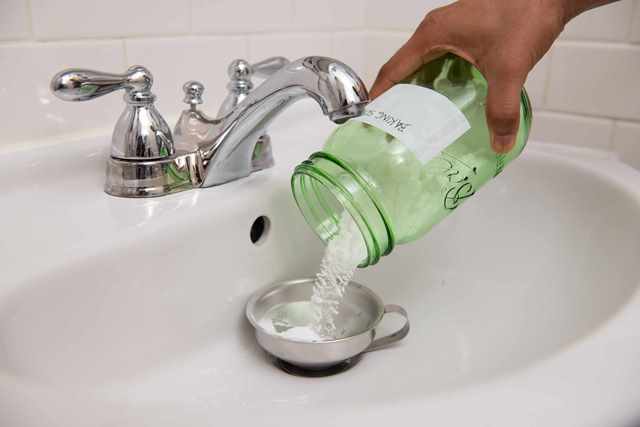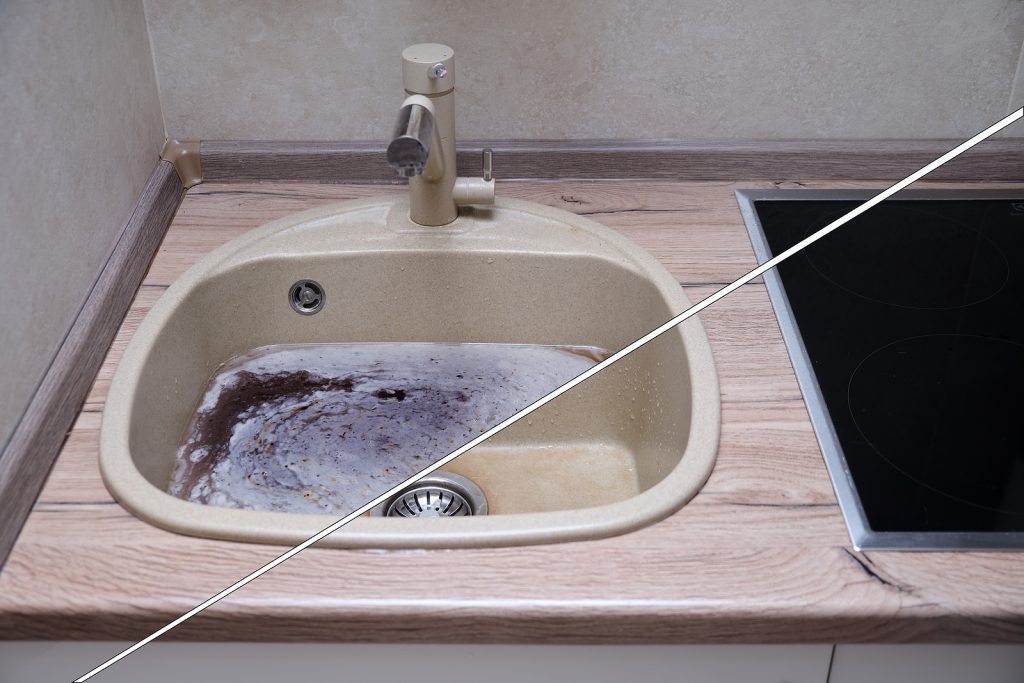Visit Page
Every person will have his or her own theory in relation to What To Do When Your Kitchen Sink Won t Drain.

It's not normal for your kitchen sink to block multiple times in one month. If your sink blocks twice a week, there's some difficulty going on.
An obstructed cooking area drain does not just reduce your duties, it degrades your whole plumbing system, bit by bit. Below are some common habits that urge sink clogs, and how to avoid them.
You require proper waste disposal
Reusing waste is terrific, however do you focus on your natural waste too? Your kitchen needs to have two separate waste boxes; one for recyclable plastics as well as another for natural waste, which can end up being compost.
Having an assigned trash can will certainly aid you as well as your household avoid tossing pasta as well as other food remnants down the drain. Usually, these remnants take in dampness and also come to be clogs.
The mistake isn't from your kitchen sink at all
Perhaps the problem isn't from your kitchen sink, yet the entire water drainage system. In such a case, you might discover that other sinks and drains pipes get obstructed every other week. You need a specialist plumbing solution to fix this.
You're throwing coffee down the tubes
Used coffee premises as well as coffee beans still take in a substantial quantity of wetness. They might seem small sufficient to throw down the drainpipe, but as time goes on they begin to swell as well as take up more area.
Your coffee premises must go into natural waste disposal. Whatever portion leaves (possibly while you're depleting) will certainly be looked after throughout your month-to-month cleanup.
Youhave actually been consuming a lot of oily foods
Your kitchen sink might still get blocked despite organic garbage disposal. This might be since you have a diet abundant in greasy foods like cheeseburgers.
This oil coats the within pipelines, making them narrower and even more clog-prone.
Use a plunger
Your pipeline wasn't taken care of correctly in the first place
If youhave actually been doing none of the above, however still get routine obstructions in your kitchen sink, you should call a plumber. There might be a problem with exactly how your pipes were installed.
While your plumber gets here, check for any type of leaks or irregularities around your kitchen area pipelines. Don't try to fix the pipelines on your own. This might cause a mishap or a kitchen flooding.
Somebody attempted to wash their hair in the kitchen area sink
There's a correct time and also location for every little thing. The kitchen sink is simply not the ideal place to clean your hair. Cleaning your hair in the kitchen area sink will make it obstruct sooner or later unless you make use of a drain catcher.
While a drainpipe catcher might capture the majority of the after effects, some hairs may still get through. If you have thick hair, this may be enough to decrease your water drainage and also ultimately develop an obstruction.
There's even more dust than your pipes can take care of
If you get fruits straight from a ranch, you might observe even more kitchen area dust than other people that go shopping from a shopping mall. You can easily fix this by cleaning the fruits and also veggies correctly prior to bringing them right into your house.You need proper waste disposal
What to Do When Your Kitchen Sink Won t Drain
Many of us have experienced something like this: one minute you are washing a pile of dirty dishes, and the next you hear a strange gurgling sound coming from the mechanical depths of your kitchen sink. The water is staying put, perhaps even changing colour and starting to rise; suddenly the soundtrack to Jaws is playing, and you realize you are dealing with a clogged sink! Usually, you have to act quickly, but don t panic just yet. Non-toxic home remedies and DIY solutions can do the trick, so before you call a plumber, read on to find out what you can do when your kitchen sink won t drain.
What Causes Your Sink to Clog?
It s great to know how to properly care for your kitchen sink so you can keep your drain and pipes running smoothly. For instance, some foods and products should never be washed down your drain, like grease, oil, and coffee grounds. Why? Grease and oil will eventually congeal at cold temperatures, and coffee grounds clump together when they harden. If you run hot water down your drain to flush them out, they will still cause trouble further down your pipe.
Dumping foods like meat, fibrous fruits and veggies like celery or banana peels, and starches such as noodles, rice and potatoes down your drain is also a big no, even if you have a garbage disposal. Food trapped in your disposer is a common problem, often leading to a blocked drain, so be sure not to overload it. Instead, put all your food scraps in your compost or green bin. Think of your drain as a major artery: you don t want to clog it by putting harmful food and waste down your sink which can build up over time and cause problems.
Popular Home Remedies: What You ll Need
Drain cleaners like Liquid Plumr or Drano often contain chemicals that are corrosive and harmful to the environment, so it s best not to use them. Instead, try using natural remedies and the following life hacks to remove any debris. You ll need to have the following items handy: rubber gloves (if you don t want to dirty your hands), baking soda, salt, vinegar/lemons (or lots of lemon juice), a coat hanger, a plunger, a mug or container for scooping water, and some large buckets. You can also purchase a gadget called a Zip-It, which is an alternative to using a coat hanger. Ideally, you will already have many of these household items lying around, but a quick trip to a supermarket or dollar store should do the trick.
Boiling Water Techniques
The first thing you ll need to do is remove everything from your sink (dishes, sponges, etc.) and start bailing out the excess water into a bucket. Once it is as empty as possible, and no water is filling back up into your sink, bring a kettle of water to a boil and dump its entire contents down the drain. Hot water can often loosen particles and clear a pathway.
If nothing happens after a few minutes, bail the water out and try again. If this is unsuccessful after a few attempts, pour half a cup of salt down your drain, followed by more boiling water. Wait for a few minutes to see if the water level starts to lower. Again, if nothing happens, you can try again, or try a new approach.
Baking Soda Techniques
Same as before, remove all water from your sink. Pour half a cup of baking soda followed by half a cup of white vinegar or lemon juice down your drain, and once the solution stops fizzing, cover with a stopper or a wet dish towel for about 15 minutes. Run hot water down the drain to check if the blockage is gone. You may need to repeat this a few times to clear the mess.
Alternatively, mix half a cup of salt with one cup of baking soda (do not add water), but for best results, you must let this sit for a few hours or overnight. Test it out after by pouring a pot of boiling hot water down the drain.
Go Fish: Coat Hanger or Zip-It Technique
If your sink is still causing you grief, unbend a wire coat hanger into a straight line with a hook, or use a Zip-It to fish out the clog. An alternative to properly snaking your drain, insert either of these tools down your drain until you encounter any resistance, and clear the clog by pulling it up. No luck? The clog might be further down.
Take the Plunge
If these previous techniques don t work, a little bit of elbow grease may be required. For homeowners with a garbage disposal, always unplug it before plunging and check for any clogs inside. If you have a dishwasher, use a clamp to seal off the drain line you don t want any dirty water flowing back into your appliance! Once you have done that, you are ready to plunge. Fill the clogged sink with enough water so the rubber part is sealed tightly around your drain, and work the plunger until you feel something dislodge. It may take a few minutes of plunging for water to start flowing normally down the drain.
https://blog.homestars.com/what-to-do-when-your-kitchen-sink-wont-drain/

Hopefully you enjoyed our post about What To Do When Your Kitchen Sink Won t Drain. Many thanks for taking a few minutes to read through our piece. Make sure you set aside a second to promote this page if you appreciated it. Many thanks for your time spent reading it.
Plumbing challenges? Get immediate solutions.
 Mara Wilson Then & Now!
Mara Wilson Then & Now! Ross Bagley Then & Now!
Ross Bagley Then & Now! Michael C. Maronna Then & Now!
Michael C. Maronna Then & Now! Talia Balsam Then & Now!
Talia Balsam Then & Now! Mary Beth McDonough Then & Now!
Mary Beth McDonough Then & Now!